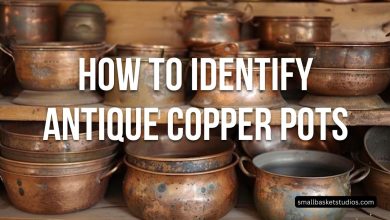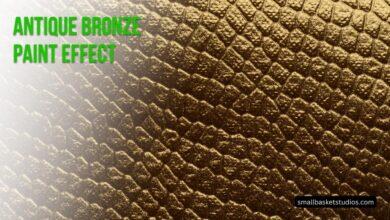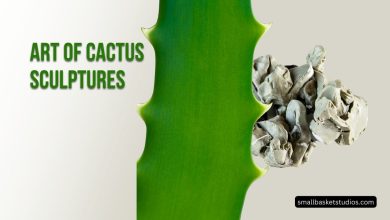Antique Charcoal Portrait
In the vast tapestry of art history, few mediums capture the essence of human expression quite like the antique charcoal portrait. These monochromatic masterpieces, often yellowed with age, offer a haunting glimpse into the past, preserving the likenesses of individuals long gone. From the smudged lines that define a subject’s features to the delicate play of light and shadow, antique charcoal portraits possess a timeless quality that continues to captivate art enthusiasts, historians, and collectors alike.
In this comprehensive exploration, we’ll delve into the fascinating world of antique charcoal portraiture. We’ll trace its origins, examine the techniques employed by master artists, and uncover why these portraits hold such enduring appeal in the modern era. Whether you’re a seasoned art collector or simply curious about this distinctive art form, join us on a journey through time as we unravel the mysteries and magic of antique charcoal portraits.
The Rich History of Charcoal Portraiture
Ancient Beginnings
The use of charcoal as an artistic medium dates back to prehistoric times, with early humans creating cave drawings using burnt wood. However, the refined art of charcoal portraiture as we know it today has a more recent history.
Renaissance Revival
While charcoal had been used for preliminary sketches by artists for centuries, it wasn’t until the Renaissance that it began to gain recognition as a medium for finished works. Artists like Leonardo da Vinci and Albrecht Dürer elevated the status of charcoal drawings, using the medium to create stunningly detailed portraits and studies.
19th Century Boom
The 19th century saw a significant rise in the popularity of charcoal portraiture. Several factors contributed to this surge:
- Photography’s Influence: The invention of photography in 1839 paradoxically boosted interest in hand-drawn portraits. Many artists used photographs as references, allowing for more accurate likenesses.
- Industrial Revolution: The mass production of art supplies, including high-quality charcoal and paper, made the medium more accessible to artists.
- Romantic Movement: The expressive nature of charcoal aligned well with the emotional intensity favored by Romantic artists.
Notable Artists and Works
Some renowned artists who excelled in charcoal portraiture during this period include:
- John Singer Sargent (1856-1925): Known for his confident, fluid lines and ability to capture personality.
- Georges Seurat (1859-1891): Famous for his innovative use of texture and tone in charcoal drawings.
- Käthe Kollwitz (1867-1945): Her powerful, emotive portraits often depicted the struggles of the working class.
The Art and Technique of Antique Charcoal Portraiture
Materials Used
Antique charcoal portraits were created using a variety of materials, each contributing to the unique character of the finished work:
- Charcoal: Artists used both natural wood charcoal and compressed charcoal sticks. Natural charcoal provided a more organic, textured line, while compressed charcoal offered deeper blacks and smoother application.
- Paper: The choice of paper was crucial. Many artists preferred textured papers that would hold the charcoal well and add depth to the image. Common types included:
- Ingres paper: A laid paper with a distinctive ribbed texture
- Michallet paper: Known for its irregular, toothy surface
- Bristol board: Smooth and durable, ideal for detailed work
- Fixatives: To prevent smudging, artists would use fixatives made from natural resins dissolved in alcohol. These were often applied using mouth atomizers.
- Erasers: Kneaded erasers and bread crumbs were used to lift charcoal and create highlights.
Techniques and Styles
Antique charcoal portraits showcase a range of techniques that artists developed to capture the essence of their subjects:
- Blending: Artists would use their fingers, stumps (tightly rolled paper tools), or chamois cloth to smudge and blend charcoal, creating smooth gradations of tone.
- Hatching and Cross-Hatching: These techniques involve drawing closely spaced parallel lines, sometimes intersecting, to create areas of shadow and texture.
- Subtractive Drawing: Artists would cover the paper with charcoal and then use erasers to “draw” by removing material, creating highlights and defining forms.
- Chiaroscuro: This dramatic use of light and shadow was particularly effective in charcoal, allowing artists to create striking, three-dimensional effects.
The Portrait-Making Process
Creating an antique charcoal portrait was a meticulous process that typically involved several stages:
- Preliminary Sketch: The artist would begin with a light outline, establishing the basic proportions and composition.
- Building Tone: Gradual layers of charcoal would be applied to develop the overall tonal structure of the portrait.
- Refining Details: Using various techniques, the artist would add fine details, focusing on capturing the subject’s unique features and expression.
- Highlighting: Strategic use of erasers and white chalk would bring out highlights and add dimensionality.
- Fixing: The finished portrait would be carefully sprayed with fixative to preserve the delicate charcoal work.
The Enduring Appeal of Antique Charcoal Portraits
Aesthetic Value
Antique charcoal portraits possess a unique aesthetic that continues to resonate with modern viewers:
- Timeless Elegance: The monochromatic palette lends a classic, sophisticated look that transcends artistic trends.
- Emotional Depth: The interplay of light and shadow can convey a range of emotions and moods, often resulting in psychologically complex portraits.
- Textural Interest: The visible strokes and smudges of charcoal add a tactile quality to the images, inviting closer inspection.
Historical Significance
These portraits serve as valuable historical documents, offering insights into:
- Fashion and Style: Clothing, hairstyles, and accessories depicted in the portraits provide a window into past eras.
- Social Norms: The poses, expressions, and settings chosen for portraits can reveal much about societal expectations and values of the time.
- Artistic Movements: Charcoal portraits reflect the changing artistic trends and techniques of their respective periods.
Collectibility and Investment Value
The market for antique charcoal portraits has seen steady growth in recent years:
- According to a 2023 report by Art Market Research, prices for 19th-century charcoal portraits have increased by an average of 7.5% annually over the past decade.
- Notable sales include a John Singer Sargent charcoal portrait that fetched $461,000 at a Sotheby’s auction in 2021.
Factors influencing the value of antique charcoal portraits include:
- Artist Reputation: Works by well-known artists command higher prices.
- Condition: Well-preserved portraits with minimal fading or damage are more valuable.
- Subject Matter: Portraits of historical figures or exceptional beauty tend to be more sought after.
- Provenance: A documented history of ownership can significantly increase a portrait’s value.
Preservation and Care of Antique Charcoal Portraits
Proper care is essential to maintain the beauty and value of these delicate artworks:
Environmental Factors
- Light Exposure: UV light can cause fading and paper degradation. Display portraits away from direct sunlight and use UV-filtering glass in frames.
- Humidity Control: Maintain a stable relative humidity between 45-55% to prevent paper warping and mold growth.
- Temperature: Keep portraits in a cool environment, ideally between 65-70°F (18-21°C).
Handling and Storage
- Use clean, lint-free gloves when handling unframed portraits.
- Store unframed works flat in acid-free archival boxes or folders.
- When framing, use acid-free matting and backing boards.
Professional Conservation
For valuable or deteriorating portraits, consult a professional art conservator. They can:
- Clean the portrait using specialized techniques.
- Repair tears or address acid damage in the paper.
- Apply appropriate fixatives to stabilize the charcoal.
The Influence of Antique Charcoal Portraits on Modern Art
The legacy of antique charcoal portraiture continues to inspire contemporary artists:
- Revival of Traditional Techniques: Many modern artists are rediscovering and adapting classical charcoal drawing methods.
- Digital Emulation: Some digital artists create works that mimic the look and feel of charcoal portraits, blending traditional aesthetics with new technology.
- Conceptual Reinterpretations: Contemporary artists often reference or subvert the conventions of antique portraiture in their work, exploring themes of identity, representation, and the passage of time.
Comparative Analysis: Antique Charcoal vs. Other Portrait Mediums
To better understand the unique qualities of antique charcoal portraits, let’s compare them to other popular portrait mediums of the 19th and early 20th centuries:
| Aspect | Charcoal Portraits | Oil Paintings | Daguerreotypes | Pencil Drawings |
|---|---|---|---|---|
| Tonal Range | Excellent; rich blacks to subtle grays | Widest range; vibrant colors | Limited; metallic quality | Good; more limited than charcoal |
| Texture | Visible strokes, velvety finish | Varied; from smooth to impasto | Smooth, reflective surface | Fine lines, less textural variation |
| Durability | Fragile; susceptible to smudging | Very durable when properly cared for | Delicate; prone to tarnishing | Relatively stable; can fade over time |
| Time to Create | Relatively quick | Time-consuming | Instant (after setup) | Quick to moderate |
| Cost (historical) | Moderate | Expensive | Initially high, then decreased | Inexpensive |
| Portability | Highly portable | Limited portability | Not portable (required studio setup) | Highly portable |
| Ease of Revision | Easy to modify | Difficult to make major changes | No revisions possible | Moderately easy to revise |
This comparison highlights the unique position of charcoal portraits in the artistic landscape of the time. Their combination of expressive potential, relative affordability, and quick execution made them a popular choice for both artists and patrons.
FAQs About Antique Charcoal Portraits
Q: How can I tell if a charcoal portrait is genuinely antique?
A: Look for signs of age such as yellowing of the paper, period-appropriate framing, and the artist’s signature style. Consulting an art appraiser or using scientific methods like paper analysis can provide more definitive answers.
Q: Are antique charcoal portraits valuable?
A: The value varies greatly depending on the artist, condition, and subject matter. While some portraits by renowned artists can fetch high prices at auction, many antique charcoal portraits are modestly priced, making them accessible to collectors.
Q: Can I clean an antique charcoal portrait myself?
A: It’s generally not recommended to attempt cleaning antique charcoal portraits yourself, as the medium is very delicate. Always consult a professional conservator for cleaning and restoration.
Q: How should I display an antique charcoal portrait?
A: Display the portrait away from direct sunlight, in a room with stable temperature and humidity. Use UV-filtering glass in the frame to protect against light damage.
Q: Are there any famous people who have been portrayed in antique charcoal portraits?
A: Yes, many historical figures have been captured in charcoal portraits. Examples include portraits of Mark Twain by John White Alexander, and Theodore Roosevelt by John Singer Sargent.
Conclusion
Antique charcoal portraits stand as testaments to the enduring power of artistic expression. These haunting images, crafted with skill and sensitivity, continue to captivate us with their ability to capture the essence of their subjects. From their rich history rooted in the Renaissance to their golden age in the 19th century, charcoal portraits have evolved alongside changing artistic movements and societal norms.
The unique qualities of charcoal – its versatility, expressiveness, and subtle tonal range – allowed artists to create portraits of remarkable depth and character. Today, these works not only serve as valuable historical documents but also as sources of inspiration for contemporary artists and collectors alike.
As we’ve explored the techniques, preservation challenges, and lasting influence of antique charcoal portraits, it becomes clear that their appeal transcends mere nostalgia. These portraits speak to us across time, inviting us to connect with the individuals they depict and the artists who created them. In a world increasingly dominated by digital imagery, the tactile, handcrafted nature of charcoal portraiture offers a refreshing reminder of the power of traditional artistic methods.
Whether you’re an art historian, a collector, or simply someone who appreciates the beauty of a well-executed portrait, the world of antique charcoal portraiture offers a rich field for exploration and appreciation. As we continue to value and preserve these remarkable works, we ensure that future generations can also experience the timeless allure of these shadowy masterpieces.




